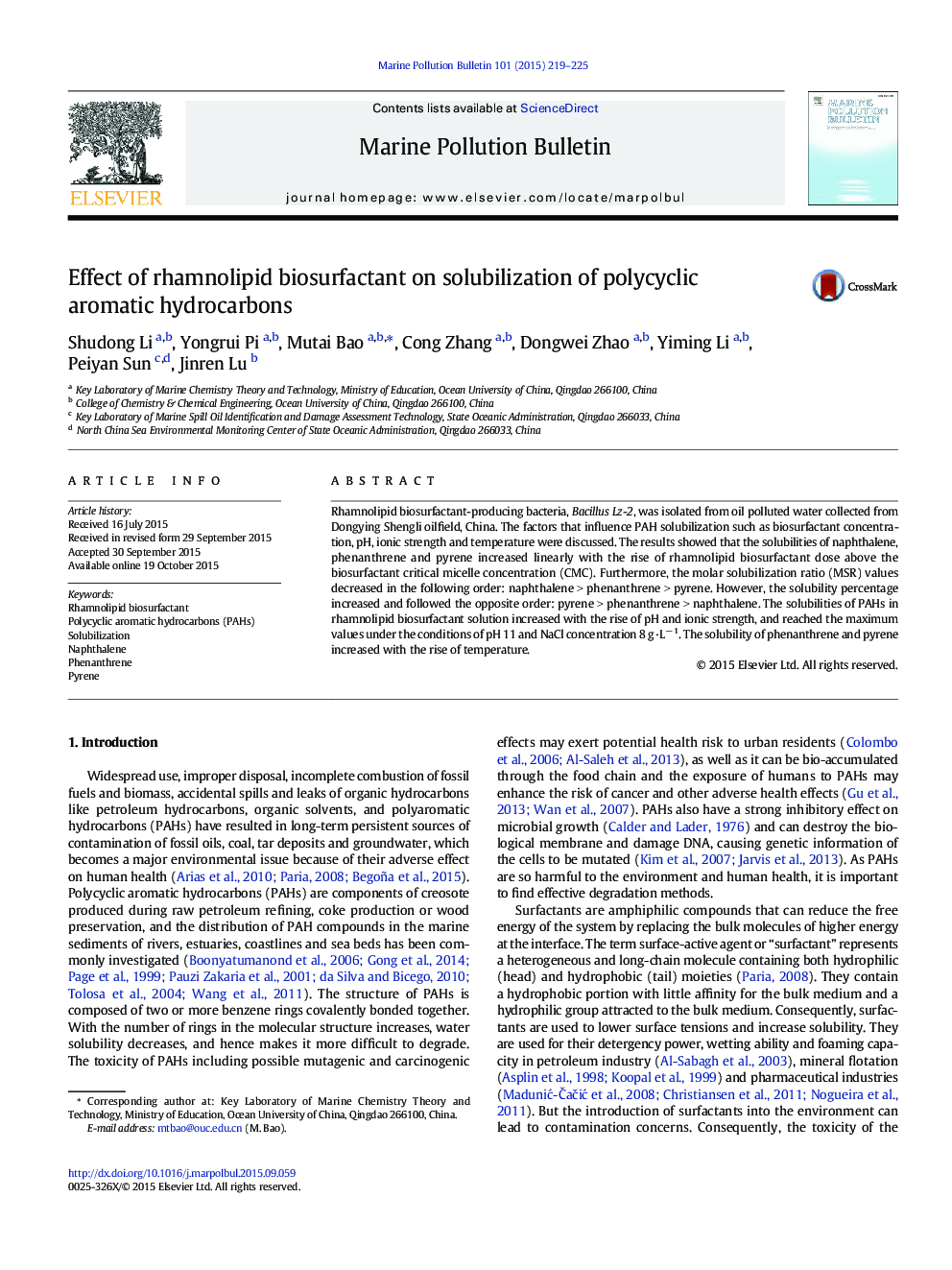| Article ID | Journal | Published Year | Pages | File Type |
|---|---|---|---|---|
| 4476605 | Marine Pollution Bulletin | 2015 | 7 Pages |
•The PAHs may exert potential health risk to urban residents and have a strong inhibitory effect on microbial growth.•The rhamnolipid which was produced by Bacillus Lz-2 was applied to enhance the solubilization of PAHs.•The influencing factors on PAH solubilization capacity were mainly discussed.
Rhamnolipid biosurfactant-producing bacteria, Bacillus Lz-2, was isolated from oil polluted water collected from Dongying Shengli oilfield, China. The factors that influence PAH solubilization such as biosurfactant concentration, pH, ionic strength and temperature were discussed. The results showed that the solubilities of naphthalene, phenanthrene and pyrene increased linearly with the rise of rhamnolipid biosurfactant dose above the biosurfactant critical micelle concentration (CMC). Furthermore, the molar solubilization ratio (MSR) values decreased in the following order: naphthalene > phenanthrene > pyrene. However, the solubility percentage increased and followed the opposite order: pyrene > phenanthrene > naphthalene. The solubilities of PAHs in rhamnolipid biosurfactant solution increased with the rise of pH and ionic strength, and reached the maximum values under the conditions of pH 11 and NaCl concentration 8 g·L− 1. The solubility of phenanthrene and pyrene increased with the rise of temperature.
Graphical abstractFigure optionsDownload full-size imageDownload as PowerPoint slide
